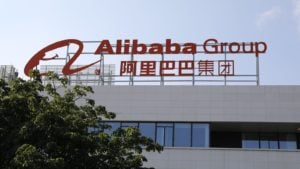The first one here is a huge name in the semiconductor industry that is currently making its global foray through strategic partnerships with a few other big players. The company positions itself on the market’s growth, considering cutting-edge technologies such as edge computing and AI.
Meanwhile, the second, a major player in the semiconductor industry, is notable for its operational and financial steadiness. Even with issues like seasonality in smartphone sales, the business maintains a solid operating margin and return on equity.
Finally, robust in retail and technology domains, the third exhibits double-digit growth in important indicators such as gross merchandise volume (GMV) and revenue from core cloud solutions. Its success in growing its international retail operations and entering the rapidly growing AI field only enhances its appeal as an investment opportunity.
Intel (INTC)

In Q1 2024, Intel (NASDAQ:INTC) product revenue boosted by +30% year-over-year (YoY) to hit $11.9 billion. Through its collaborations with giants like NAVER (OTCPK:NHNCF), Dell (NYSE:DELL), and Bosch, Intel expanded its client base and market reach. It is anticipated that these collaborations will significantly increase revenue in the AI market. Indeed, Intel is positioned for expansion via edge computing and AI projects, such as the Open Platform for Enterprise AI project and the Intel Edge Platform.
Further, by 2030, the foundry industry is predicted to increase from $110 billion to $240 billion, and Intel intends to generate $15 billion in external revenue €”less than 15% of the market for cutting-edge foundries. The firm is in a good position to take a sizable chunk of this growing market thanks to its plan to become the largest system foundry for the AI age and the second-largest overall by 2030. In Q1 2024, Intel Foundry generated $4.4 billion in revenue due to a robust pipeline of engagements and test chips.
Finally, over the next ten years, Intel Foundry anticipates that its blended average wafer pricing will increase three times faster than cost, leading to a large increase in profit.
TSMC (TSM)

In Q1 2024, TSMC (NYSE:TSM) had large cash reserves of TWD1.9 trillion, or $60 billion. This demonstrates its solid financial standing. In Q1, TSMC attained an operating margin of 42% and a return on equity (ROE) of 25.4%. Additionally, this signals its sound management of OpEx despite hurdles such as seasonality in smartphone sales and rising power prices. Further, TSMC has delivered good cash flow management, producing TWD436 billion in cash from operations and allocating resources for CapEx and dividend payments.
Moreover, the company’s plans for strategic development demonstrate TSMC’s focus on broadening its manufacturing base and strengthening its position internationally, especially in constructing fabs in Arizona, Japan, and Europe. The company’s ability to bounce back from unanticipated setbacks is reflected in TSMC’s swift recovery after the April 3 earthquake. Thanks to the robust demand for cutting-edge technology, TSMC continues to have high hopes for growth. This is especially true in applications such as AI.
Overall, the company reflects its concentration on tech leadership in the semiconductor sector through its ongoing investments in new process technologies, capacity growth, and infrastructure development.
Alibaba (BABA)

In Q4 2024, GMV on Alibaba’s (NYSE:BABA) Taobao and Tmall Group increased by double digits YoY. Revenue at Alibaba International Digital Commerce (AIDC) rose by 45% YoY. This solid increase shows that Alibaba has successfully expanded its cross-border retail operations and improved the customer experience. Moreover, the International Commerce Retail Business had a 56% YoY rise in sales, amounting to RMB 22.3 billion. Meanwhile, the International Commerce Wholesale Business saw an 11% increase in revenue, amounting to RMB 5.2 billion.
Similarly, revenue growth for Alibaba Cloud’s primary public cloud products has been double digits YoY. Alibaba’s income from AI increased by triple digits YoY, a sign of robust demand in several industries. Hence, these growth rates demonstrate Alibaba’s core competencies.
Additionally, when considering user-first strategy and monetization products as strategic investments, 88VIP memberships increased by double digits YoY to over 35 million. This shows that Alibaba’s efforts to improve member perks and the customer experience have successfully built user loyalty and confidence.
Lastly, searches for AI-optimized items climbed by 37% YoY, and 17K SMEs (merchants) subscribed to Alibaba.com’s AI business assistance. These examples show how Alibaba has successfully encouraged consumers and SMEs to utilize technology.
As of this writing, Yiannis Zourmpanos held long positions in INTC, TSM and BABA. The opinions expressed in this article are those of the writer, subject to the InvestorPlace.com Publishing Guidelines.
Yiannis Zourmpanos is the founder of Yiazou Capital Research, a stock-market research platform designed to elevate the due diligence process through in-depth business analysis.
